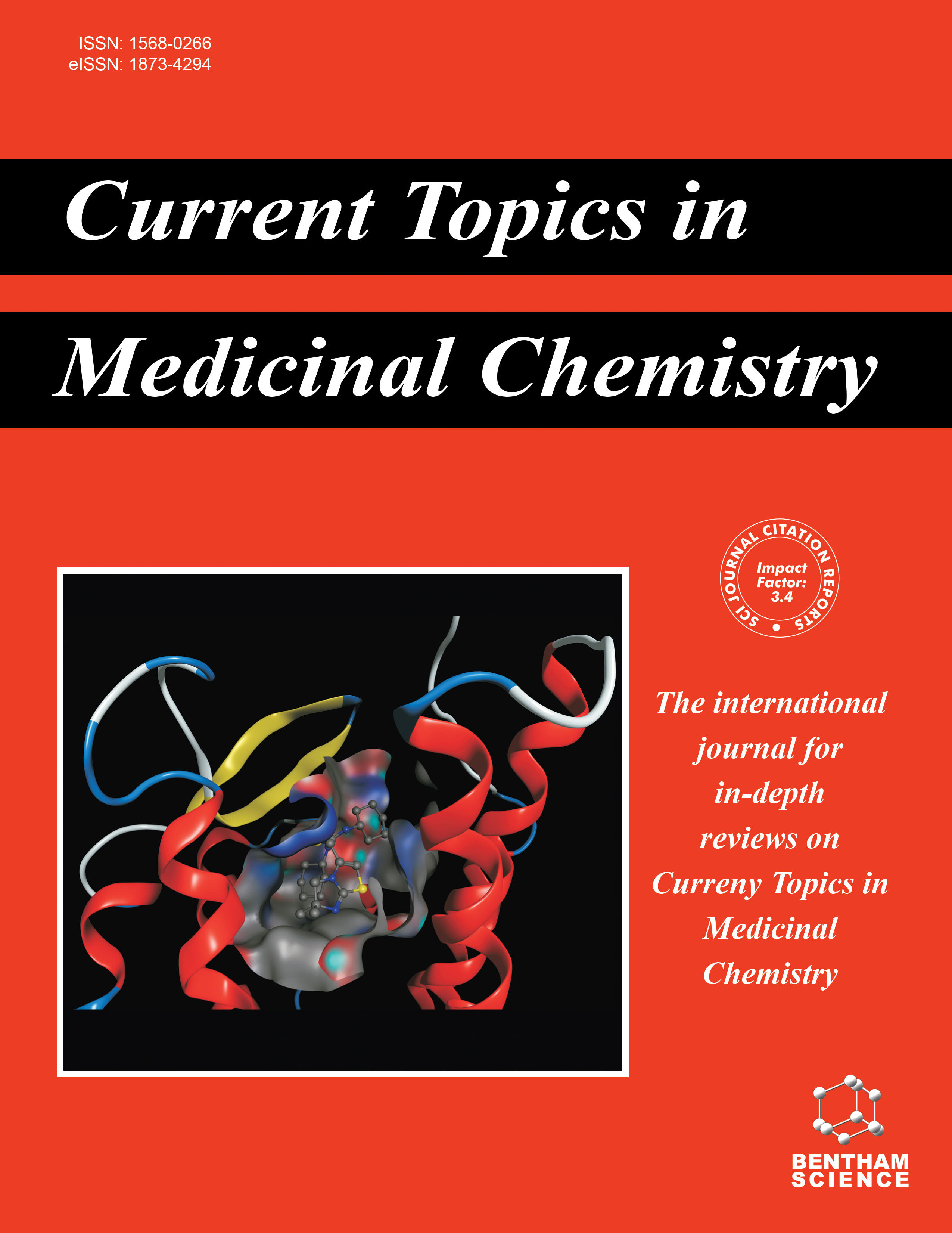- Home
- A-Z Publications
- Current Topics in Medicinal Chemistry
- Previous Issues
- Volume 13, Issue 20, 2013
Current Topics in Medicinal Chemistry - Volume 13, Issue 20, 2013
Volume 13, Issue 20, 2013
-
-
Novel Strategies for Development of Next-Generation Glycoconjugate Vaccines
More LessMost bacterial pathogens are decorated with surface glycans called capsular polysaccharides (CPSs). Each CPS has a unique structure that is distinctively recognized by our immune cells. These polysaccharides are important vaccine candidates given that they are located on the surface of pathogens, are easily accessible by the immune system, and often result in formation of protective antibodies. To induce CPS specific ad Read More
-
-
-
Immune Senescence and Vaccination in the Elderly
More LessVaccines are powerful public health tools that have been of tremendous benefit in protecting vulnerable populations worldwide from many pathogens. However, vaccine- preventable diseases still remain a considerable burden and this is particularly true among aging and aged populations in industrialized countries. The predicted demographic shift in the population landscape towards an ever-increasing aging po Read More
-
-
-
Challenges and Opportunities for Cancer Vaccines in the Current NSCLC Clinical Scenario
More LessAuthors: Pedro C. Rodriguez and Belinda SanchezThis review is aimed to focus on NSCLC as an emerging and promising model for active immunotherapy and the challenges for its inclusion in the current clinical scenario. Cancer vaccines for NSCLC have been focused as a therapeutic option based on the identification of a tumor hallmark and the active immunization with the related molecules that triggers cellular and/or humoral responses that consequently destroy or delay t Read More
-
-
-
Vaccine Adjuvants: Key Tools for Innovative Vaccine Design
More LessAuthors: Peggy Riese, Kai Schulze, Thomas Ebensen, Blair Prochnow and Carlos A. GuzmánVaccines represent the most efficient tool for preventing diseases caused by infectious pathogens. During the last century significant progress has been made in vaccine development, resulting in the eradication or control of several diseases. However, the emergence of new pathogens and the inadequate protection conferred by some existing vaccines render necessary new vaccination strategies. Newly arising immunization ap Read More
-
-
-
Pertussis Vaccines: State-of-the-Art and Future Trends
More LessAuthors: Burcu E. Tefon, Erkan Ã-zcengiz and Gülay Ã-zcengizBordetella pertussis is the causative agent of whooping cough (pertussis) which is a worldwide vaccine preventable acute respiratory illness that predominantly involves infants. The reactogenicity of whole-cell (Pw) vaccines and the difficulty of their consistent production have led to the development of acellular pertussis (Pa) vaccines. However, despite high vaccination coverage using either Pw or Pa and introduction of Read More
-
-
-
Innate Immunity and Vaccines
More LessAuthors: Andrew Platt and Lee WetzlerThe use of vaccines has led to tremendous decreases in disease burdens across the world. Many challenges remain in expanding vaccine coverage to new pathogens, however, a struggle further hampered by a lack of understanding into many of the fundamental processes through which vaccines elicit robust immunity. In this review we cover recent advances in the field of innate immunity and vaccinology that offer new in Read More
-
-
-
Mucosal Vaccines: Where Do We Stand?
More LessAuthors: Jean-Pierre Kraehenbuhl and Marian R. NeutraMucosal vaccinology is a relatively young but rapidly expanding discipline. At present the vast majority of vaccines are administered by injection, including vaccines that protect against mucosally acquired pathogens such as influenza virus and human papilloma virus. However, mucosal immune responses are most efficiently induced by the administration of vaccines onto mucosal surfaces. The small number of currently Read More
-
-
-
Structural Vaccinology: A Three-dimensional View for Vaccine Development
More LessAuthors: Roberta Cozzi, Maria Scarselli and Ilaria Ferlenghi Ilaria FerlenghiThe Structural Vaccinology (SV) approach is the logical evolution of Reverse Vaccinology: a genome-based approach combined with structural biology, with the idea that protective determinants can be used to selectively engineer the antigens that can be re-designed and simplified for inclusion in vaccine combinations. The final objectives of the rational structure-based antigen optimization are the facilitation of industri Read More
-
-
-
Antibacterial Vaccine Research in 21st Century: From Inoculation to Genomics Approaches
More LessVaccination is one of the safest and most cost-effective public health interventions, which save millions of lives annually. Thanks to all the genius pioneers of the field, we have already developed many effective vaccines. On the other hand, there are still many pathogens for which we do not yet have an effective or optimal vaccine, including malaria, HIV, and tuberculosis. In the 21st century, biological sciences are at the edg Read More
-
Volumes & issues
-
Volume 25 (2025)
-
Volume 24 (2024)
-
Volume 23 (2023)
-
Volume 22 (2022)
-
Volume 21 (2021)
-
Volume 20 (2020)
-
Volume 19 (2019)
-
Volume 18 (2018)
-
Volume 17 (2017)
-
Volume 16 (2016)
-
Volume 15 (2015)
-
Volume 14 (2014)
-
Volume 13 (2013)
-
Volume 12 (2012)
-
Volume 11 (2011)
-
Volume 10 (2010)
-
Volume 9 (2009)
-
Volume 8 (2008)
-
Volume 7 (2007)
-
Volume 6 (2006)
-
Volume 5 (2005)
-
Volume 4 (2004)
-
Volume 3 (2003)
-
Volume 2 (2002)
-
Volume 1 (2001)
Most Read This Month
Article
content/journals/ctmc
Journal
10
5
false
en


